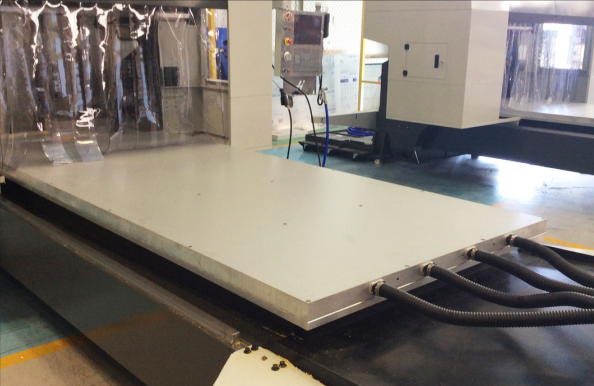For more than half a century industrial engineers have been utilizing vacuum technology to achieve effective and reliable holddown of various materials for printing, cutting, machining, measuring, application of coatings and adhesives, and many other types of processing without the use of clamps or chucks. The advantages inherent in vacuum workholding are clear: setups are faster and more accurate, the entire surface of the workpiece can be accessed, handling of the material, and potential damage to the material and the machine is minimized. These advantages have driven the expansion of vacuum workholding systems into numerous businesses and industries.
Vacuum technology is efficient, flexible, and adaptable to a wide range of materials and processes. From large industrial facilities cutting and machining steel, to woodworking shops using CNC routers, to cleanrooms recording precise measurements of aerospace grade composites, to museums and art restoration studios, vacuum table systems provide logistical solutions and operational advantages and are regarded as vital tools for success.
Although the principles of operation are the same in all vacuum table systems, the design and construction of vacuum tables varies widely depending on the application. Small tabletop systems may have a vacuum surface area of just one square inch while modular systems for industrial use may be expanded to hundreds of square feet. Stainless steel and aluminum are the most common surface materials and generally preferred for heavy-duty usage, but common variants include anodized aluminum, Formica, and even plastic surfaces to accommodate specific materials and processes.

